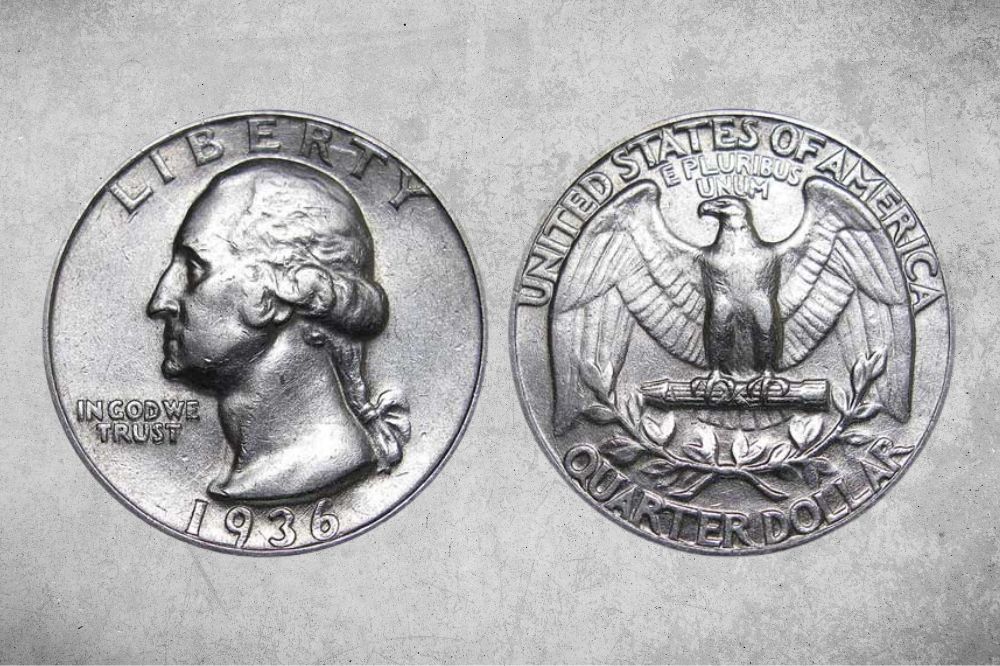1936 is already around 87 years ago, but you can still find fragments of that time today. Perhaps you might have stumbled upon a 1936 quarter. Unassuming this coin might be, this might be worth a lot today, whether in raw money or numismatic value.
In this article, we will delve into the values, varieties, history, errors, and common questions that you might have about the 1936 quarters. Keep reading to find out more!
1936 Quarter Details
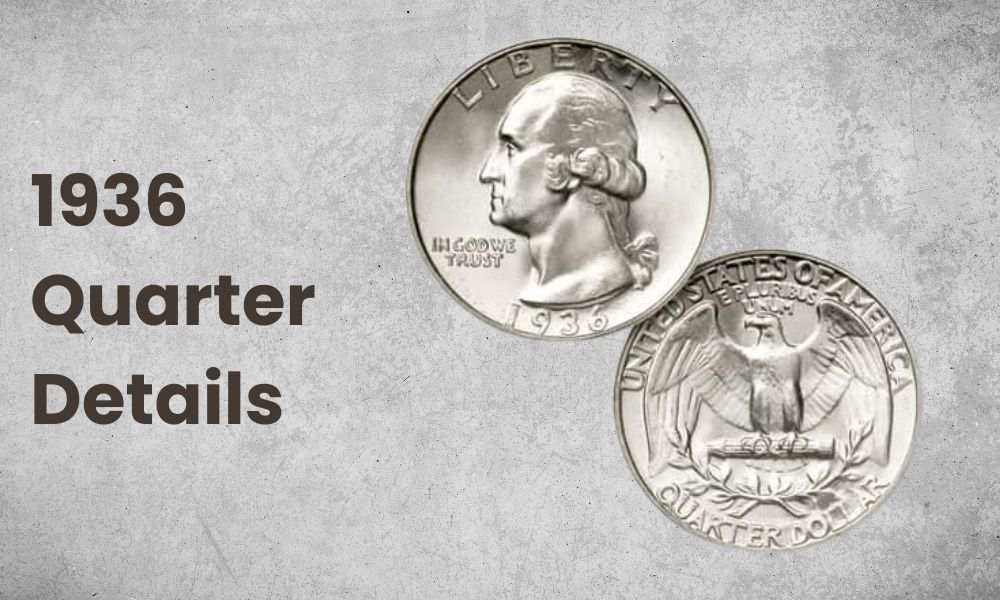
The 1936 quarter is part of a series of coins called the Washington quarters. These coins are called such because of the obverse design containing the side profile of George Washington, the first president of the United States, and the second real person featured in a circulated coin.
- Category: Washington Quarter
- Mints: Philadelphia, Denver, San Francisco
- Year: 1936
- Total Mintage: 50,505,837
- Obverse Designer: John Flanagan
- Reverse Designer: John Flanagan
- Edge: Reeded
- Diameter: 24.3 millimeters (0.96 inches)
- Composition: 90% silver, 10% copper
- Weight: 6.30 grams
1936 Quarter Value Chart
| Mint Mark | Good (G-4) | Fine (VF-12) | Extremely Fine (XF-40) | Mint State (MS-65) |
| 1936 P (No Mint Mark) Quarter Value | $5.62 | $5.62 | $6.80 | $136 |
| 1936 D Quarter Value | $15 | $29 | $64 | $1,227 |
| 1936 S Quarter Value | $5.62 | $7.74 | $15 | $372 |
1936 Quarter Values and Varieties Guides
1936 P (No Mint Mark) Quarter Value
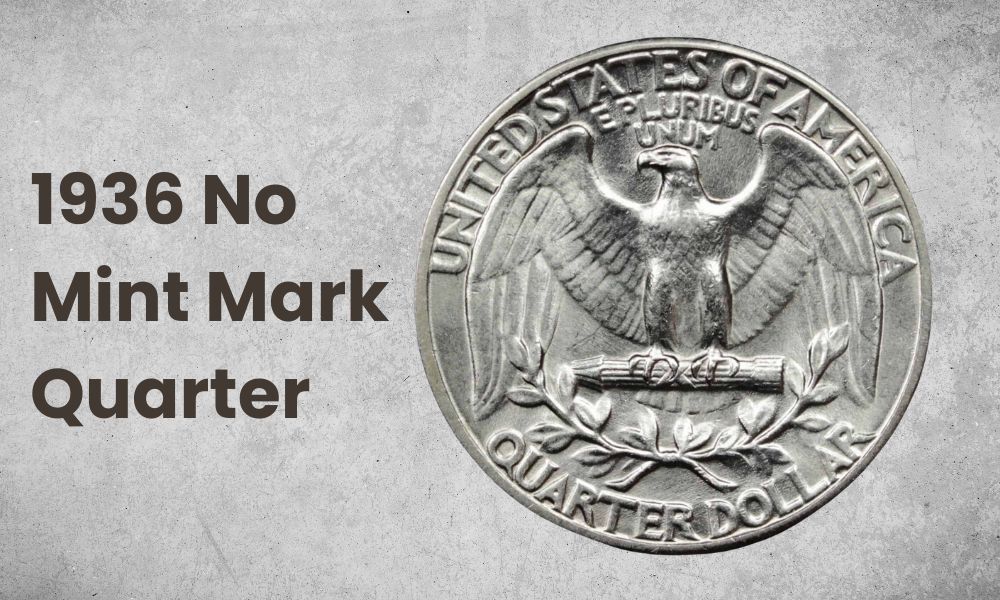
- Type: Washington Quarter
- Edge: Reeded
- Mint mark: None
- Place of minting: Philadelphia
- Year of minting: 1936
- Face value: $0.25
- $ price: $5.62 to $1,900
- Quantity produced: 41,300,000
- Designer: John Flanagan
As the United States was starting to recover from the Great Depression, the improving economic conditions demanded a lot of quarter dollars from the Philadelphia Mint, hence the high mintage of over 41 million, the highest in the 1930s.
Starting from this year, too, the Philadelphia Mint’s Engraving Department settled on the Heavy Motto subtype, first used in 1934, as the master hub for the rest of the coin series until 1964. You’ll find this clearly on the “IN GOD WE TRUST”, where the center peak of the W is well above the left and right sides.
Most 1936 quarters are well-struck and have lustrous surfaces. With around 4 million surviving coins today, many gem examples were also released during the 1960s and 1970s, making them quite plentiful across all grades.
Gems are readily available even until MS67. According to PCGS, MS65 coins can start at $90 while common gems can be found for as high as $425 for an MS67 coin. The coin can be found at its highest grade of MS68, where it can be found for around $3,500 upward.
The current auction record for the 1936 P was an MS68 coin, bought at $9,000.
1936 D Quarter Value
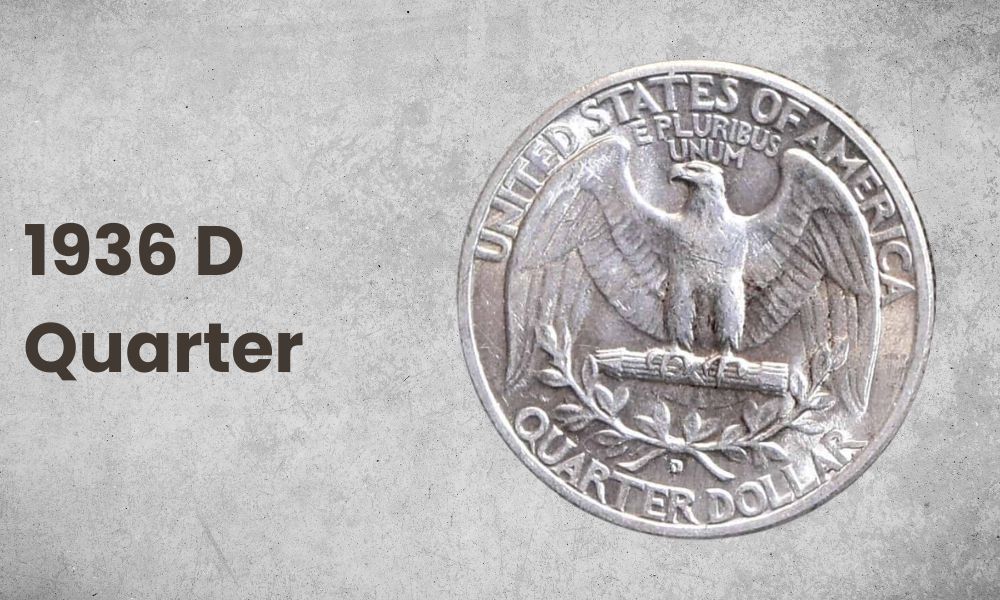
- Type: Washington Quarter
- Edge: Reeded
- Mint mark: D
- Place of minting: Denver
- Year of minting: 1936
- Face value: $0.25
- $ price: $15 to $7,500
- Quantity produced: 5,374,000
- Designer: John Flanagan
The 1936 D quarters, although they pale in comparison to the Philadelphia mintage, are not the least for this year. That title goes to the S coins, although quite oddly, the 1936 D Washington quarters are rare despite their average mintage of 5 million.
Although there is no specific reason, the rarity of the 1936 D quarters is often compared to other rare coins in the Washington quarter coin series, like the 1932 D and the 1934 D. Although worn examples are actually plentiful, they enjoy the same reputation of rarity as the truly rare gems, hence their high prices.
You’ll find the 1936 D quarters to be well-struck and have outstanding luster, which is common for coins of this year. Because of the rarity of gem examples, sliders are quite common for this coin, so buyers should be careful when looking for these examples.
Because of the perceived rarity mentioned above, the 1936 quarters start at a higher price than the rest of the other mintages, at $15 for a G4 coin. They can go up as grade increases and reach as much as $925 before we start at the gem grades. The highest gem example, MS67+, can be found at $7,500.
The current auction record price is $17,250 for an MS67 gem.
1936 S Quarter Value
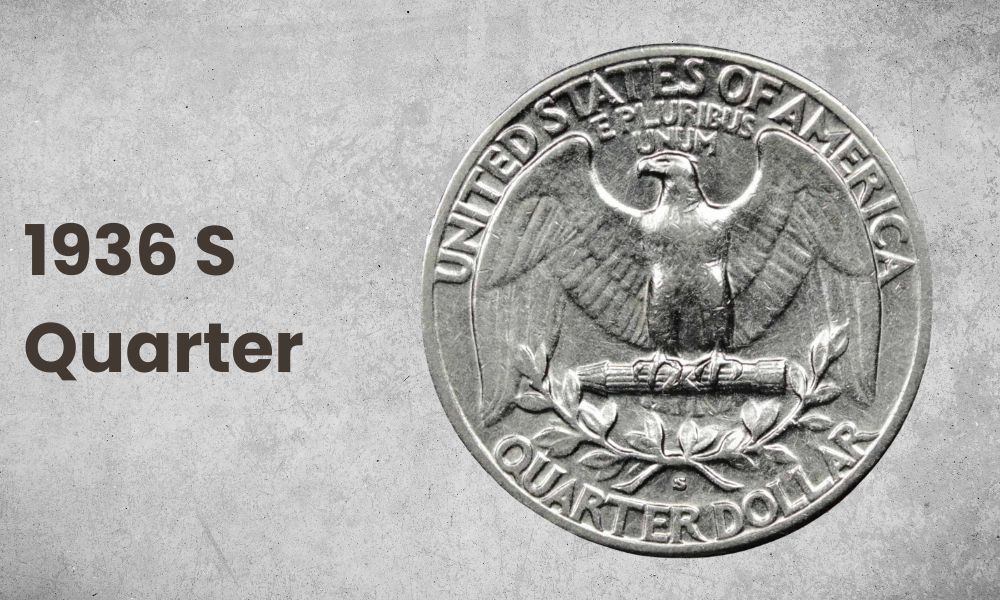
- Type: Washington Quarter
- Edge: Reeded
- Mint mark: S
- Place of minting: San Francisco
- Year of minting: 1936
- Face value: $0.25
- $ price: $5.62 to $26,500
- Quantity produced: 3,828,000
- Designer: John Flanagan
The 1930s were a key date among the San Francisco Washington quarters. Consistently sporting the lowest mintages every year, these coins were often hoarded by collectors who lived in the East. Ironically, despite a low 3 million mintage for the 1936 issue, this hoarding made them more readily available than the 1936 Denver mintages.
Regardless, the 1936 S coins are still considered to be a rare coin, just like the other S coins of this decade. These coins were also not considered to be well-struck, at least when compared to the Philadelphia and Denver mints. They can be lustrous but weakly struck on the high points.
Despite their low mintage and surviving population, they can be found at the same price as the Philadelphia mintage, starting at $5. They can reach as high as $500, at MS66+, at which they can still be easily found. Higher grades starting at MS67 are harder to find, peaking at $26,500 for an MS68 gem.
The current auction record is an MS68 example, sold at $31,200.
1936 Proof Quarter Value
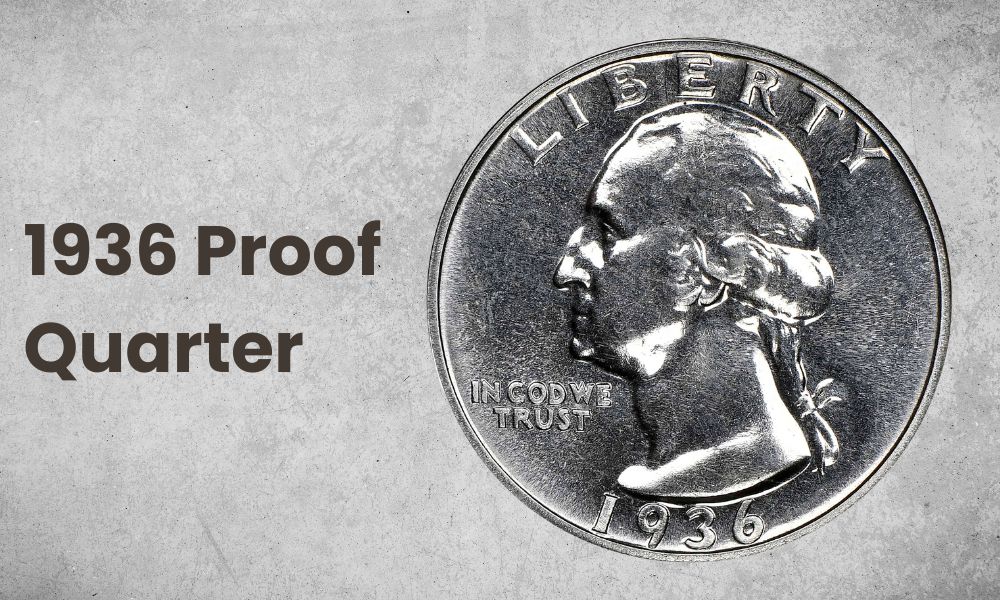
- Type: Washington Quarter
- Edge: Reeded
- Mint mark: none
- Place of minting: Philadelphia
- Year of minting: 1936
- Face value: $0.25
- $ price: $200 to $7,250
- Quantity produced: 3,837
- Designer: John Flanagan
The 1936 proof quarters are special for multiple reasons: they had the lowest mintage for the entire proof Washington quarters; they were the first proof Washington quarters ever produced, and; they were struck with the same dies used in currency coins
Resuming from a 20-year hiatus of developing proof coins, these proof coins were not as brilliant as later proofs, as the Mint was still developing its proof-making techniques. The dies used by ordinary coins were simply polished to give them a mirror finish.
They can be found in various grades, from PR58 to PR67, becoming exceedingly rare beyond PR66.
The current auction record price for a 1936 proof quarter is $10,925 for a PR67 example.
Also Read: Top 15 Most Valuable Quarters In Circulation
1936 Quarter History
The 1936 quarter coin is part of the series called the Washington quarters, which is still in circulation today. Although first struck in 1932, the coin has undergone several design changes over the course of its run. The 1936 quarter has the original design which lasted until 1964.
At the onset of the Great Depression in 1929, no half-dollar coins were minted. Despite that, 1932 was coming up with a special celebration: the bicentennial anniversary of George Washington’s birthday. The George Washington Commission, and later the George Washington Committee, was created to prepare for this event.
Originally, with no half-dollar coins in circulation, the Committee originally decided to make a one-year-only commemorative half-dollar coin for 1932. Despite not having Congressional approval, the Committee held an open competition for the coin designs.
Later on, it was decided that instead of making a single-year issue for a commemorative coin, the then-current quarter coin, the Standing Liberty quarter, which was found to be unsatisfactory and due to be replaced, would be replaced by a Washington quarter.
When the Treasury decided on this, they held another competition. The Committee initially chose the design of Laura Gardin Fraser, who also designed several other US commemorative coins, which also won the first design competition. However, Treasury Secretary Andrew W. Mellon chose John Flanagan’s design.
Eventually, Flanagan’s design was ultimately chosen, which was thought to be a bad choice for medallic art. Although the low relief of the design made it initially great for production since a single strike should be enough, the master hub would later then be constantly modified.
Three major variations of the master hub were available during the early mints of the Washington quarters: the Light Motto, the Medium Motto, and the Heavy Motto. They were easily distinguished by the relief of the IN GOD WE TRUST motto.
The Light Motto was mostly found on 1932 coins, which had the motto mostly mushy and indistinct. The Medium Motto, mostly found on 1935 coins, fared a bit better but had thinner letters. The Heavy Motto had a very strong relief on the motto, making it very clear.
By 1936, the Heavy Motto was deemed the most satisfactory among these variations and has since then been used until 1964.
The Washington quarter is also the second coin in major circulation that contained a real person in its design. The first one was Abraham Lincoln on the one-cent coin.
Also Read: Top 16 Most Valuable Modern Quarters Worth Money
1936 Quarter Grading
The Sheldon scale is often extensively used by coin collectors to judge the condition of a coin. This scale starts from 1 and ends at 70, and each grade is often accompanied by qualitative categories, like Good, Fine, Almost Uncirculated, and Mint State. Proof coins are often accompanied by the same numerical scale, but the qualitative category is simply Proof.
Most 1936 quarters are well-struck, except for the San Francisco mints, so you might want to know how well these coins would be graded. You can refer to the YouTube video linked below to know how to grade these coins yourself.
Lists of 1936 Quarter Error
1. 1936 Quarter DDO
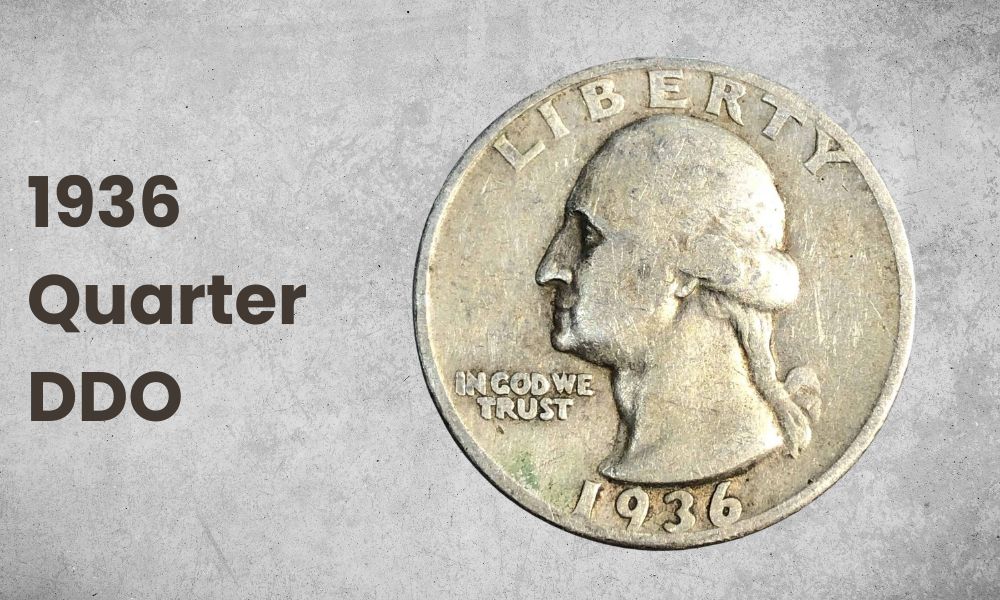
The doubled die obverse (DDO) error refers to a manufacturing error where the die contains a duplicated element of the design. Note that it is different from punching in the same design twice. The die itself contains the doubled design error, and coins punched with this die will have the error.
The error is on the obverse of the coin, prominently on the motto “IN GOD WE TRUST.” You can see it on “IN” and “TR”. You can also see this error on the date on some coins. This error is also only usually found on the Philadelphia mintage and on a variety of grades.
The current auction record for a coin with this error is an MS66 example, which sold for $6,600.
2. 1936 Quarter S RPM
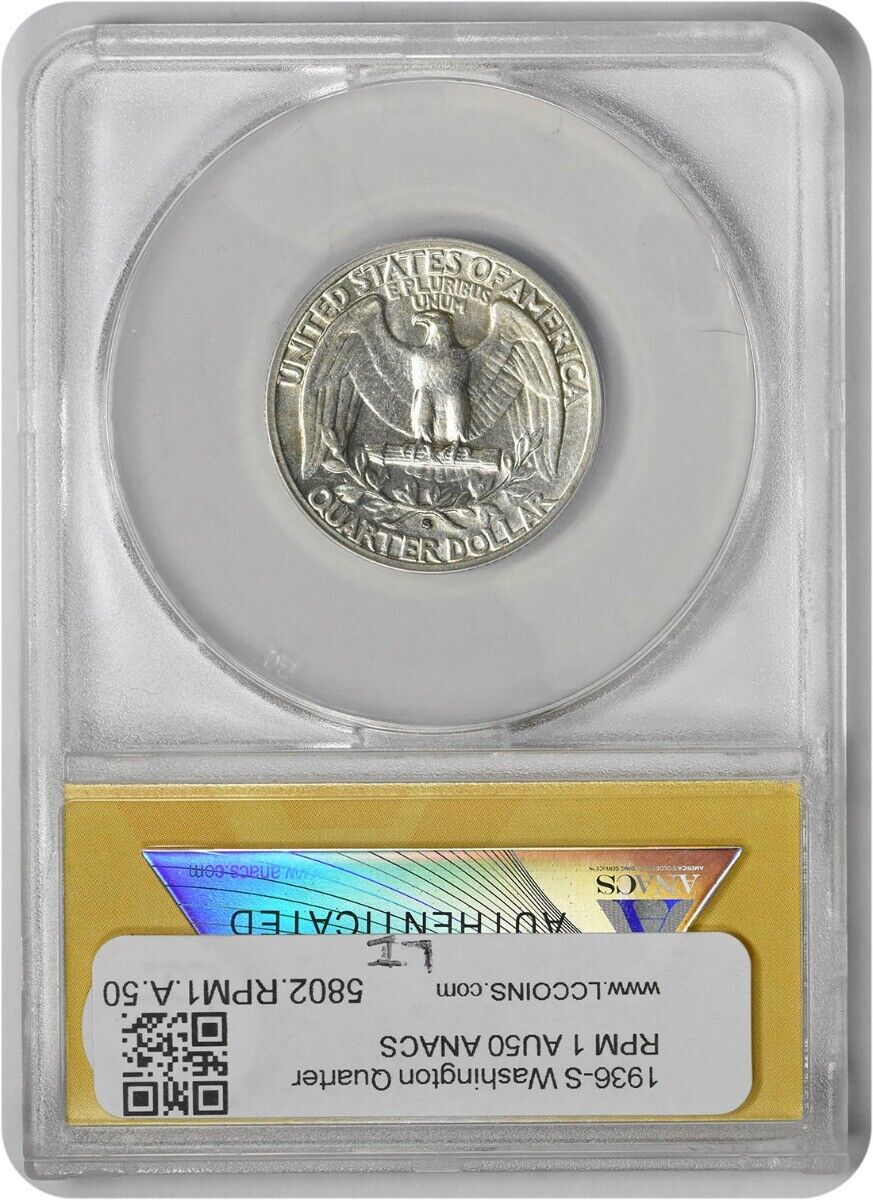
The repunched mint mark (RPM) refers to a punching error where the mintmark is struck twice, and the subsequent strike is offset in a different direction. This results in two mintmarks on the same coin, and the first impression is often lighter than the top, stronger impression.
The 1936 S quarter has its mintmark on the reverse, right above the “QUARTER DOLLAR” element. The repunched mintmark has the S mark repunched on top of another S mintmark, with the mintmark underneath lying east of the top mark.
1936 Quarter Value FAQs
Is a 1936 quarter silver?
The 1936 Washington quarter is made up of 90% silver, so yes, it is silver. It contains about 0.18 troy ounce of silver, which works out to a melt value of $3.75 for its silver bullion.
However, not all Washington quarters are silver. Starting in 1965, the composition of the quarter was changed into a clad composition, made of cupronickel (copper-nickel) with pure copper cladding.
Can you tell if a quarter is silver?
Yes, you can, by simply checking the date. All Washington quarters dated 1964 and older are certainly made of 90% silver.
1965 is a special date because of the passing of the Coinage Act of 1965, which ordered the transition from minting silver coins into clad coins.
What quarters are worth money?
The 1936 quarters are worth some money, especially if you have Mint State coins: coins that have not been circulated and thus retain much of the quality and luster. Of course, these coins are rare, but if you do find them, they can be worth quite a lot of money.
If you get them graded by a third party like PCGS or NGC and get a grade of MS65, you can sell them for at least $90. The higher the grade, the higher the asking price.
Also Read: 10+ Rarest State Quarter Errors Lists (Worth Much Money!!!)
